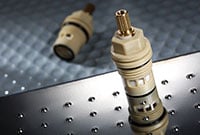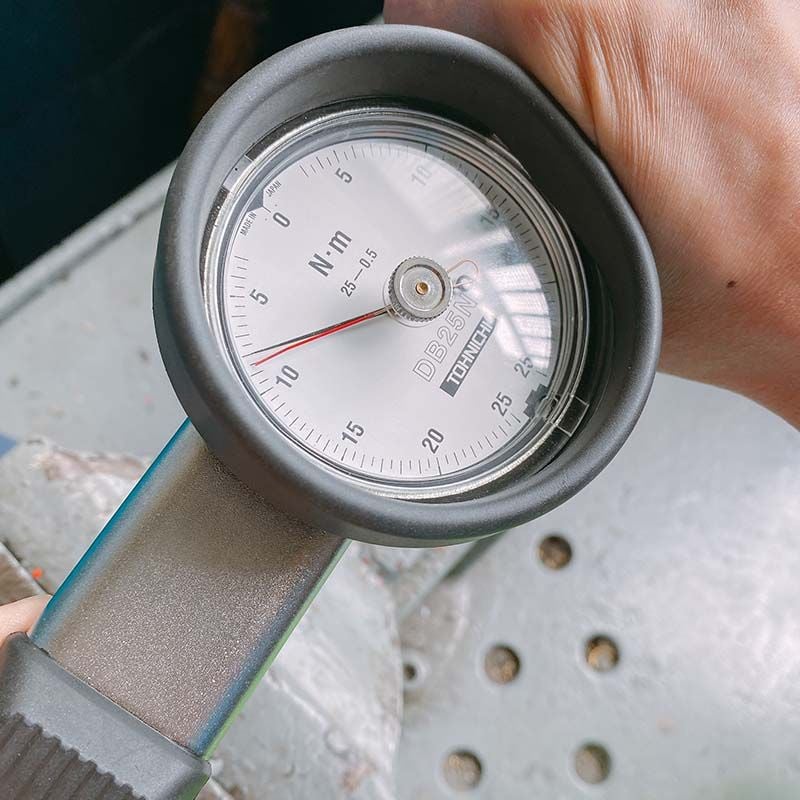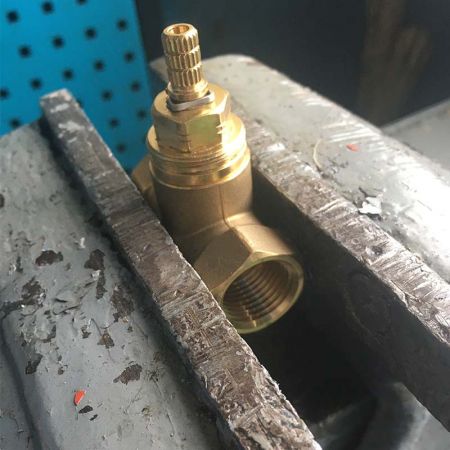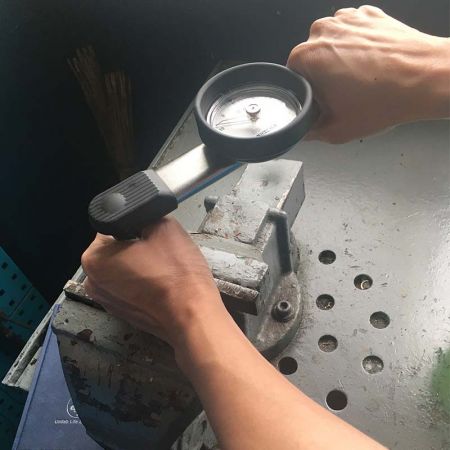Operating Machanism
Geann adopts ASMEA112.18.1, EN817 and AS3718 standards to do torque test.
The following information is four parts, including operating torque, cartridge strength, retainer tightening torque and overtightening influences. Basically, Geann abides by the highest rule among several international certificates. In this way, we could not only meet various customer’s need, but also ask ourselves to produce the best cartridge.
OPERATING TORQUE
We usually indicate that operating torque is operating controls that open or close water supply shall withstand a torque or force. Every certification shows different value of torque, like ASME three times of 1.7Nm, EN817 6Nm for 5minutes, EN200 6Nm for 5minutes, AS3718 8Nm for 30 to 50 seconds. How do we test? We assemble the cartridge in the fixed body and follow the rules to test and evaluate the torque value with professional tools. From R&D department, we do the evaluation in the progress of a new designed item. Even if it’s a standardized cartridge, we also inspect a certain proportion of cartridge to ensure the quality. Due to operating torque is important to a cartridge, the way of turning on the water is decided by the operating torque. It is an important factor of turning on hot or cold water. Most important of all, after the test of life cycles, the operating toque is still stable.
CARTRIDGE STRENGTH
How do we test? Take AS3718 as an example, first we install a cartridge in the body and fix them. Based on our setting of locking torque 8-10Nm(single lever cartridge) and 12-15Nm(ceramic brass cartridge), and the handle will be forced 8Nm for 30 to 50 seconds according to AS3718 standard. Above is first step and we check the parts of the cartridges are all harmless and then do air test to proceed the next step. In the second stage, we impose the strongest force to the cartridge and keep rotating it until it is broken. The maximum of torque will show by red pointer.
In addition, though the handle is damaged or cracked, Geann’s special design on cartridge construction will lead the cartridge to crack at a safety point so users could still rotate the spindle to close water with simple tool. Normally, once your handle is broken, the water supply would not stop. Therefore, a safety mechanism of cartridge is important.
RETAINER TIGHTENING TORQUE
Install the cartridge to the body according to the tightening torque instruction. Usually you could use wrench and tools fix the cartridge into the body. Then, check if the strength of cartridge is stable and make sure the effect of seal abide by the rule of certification. The situation of over tightening torque would cause life cycles and operation of handle, on the other hand, the cartridge would show leakage when the torque is not enough. We provide the best operating torque and enhance the life cycles of cartridges.
OVERTIGHTENING INFLIENCES
Overtightening is negative to a cartridge, and so is overlocking the nut, both would cause the broken handle and result in the leakage, even break the parts of cartridge. Geann implements long-term tests and achieves worldwide requirement of life times. Therefore, we are very careful to this kind of problem, please follow the instruction and control the torque appropriate.
- ASMEA112.18.1-5.8.1 Operating controls
- EN817-13.Torsion Resistence Characteristics of Control
- AS3718-Clause 4.11: Torque of operating mechanism
Press Release
 All Cartridges Complied to California AB100 Law
All Cartridges Complied to California AB100 LawGeann Cartridges and Valves are all complied to California AB100 Law. Our products are certified by both NSF International and IAPMO.
Read More 1/2 Half inch Faucet Plastic Cartridge
1/2 Half inch Faucet Plastic Cartridge1/2 Half inch Two Handle Faucet Plastic Ceramic Cartridge for Faucet, Basin Application.
Read More Pressure Balance Valve With Diverter
Pressure Balance Valve With DiverterPressure Balance Valve With Diverter for Anti-Scald and Shower Application.
Read More



